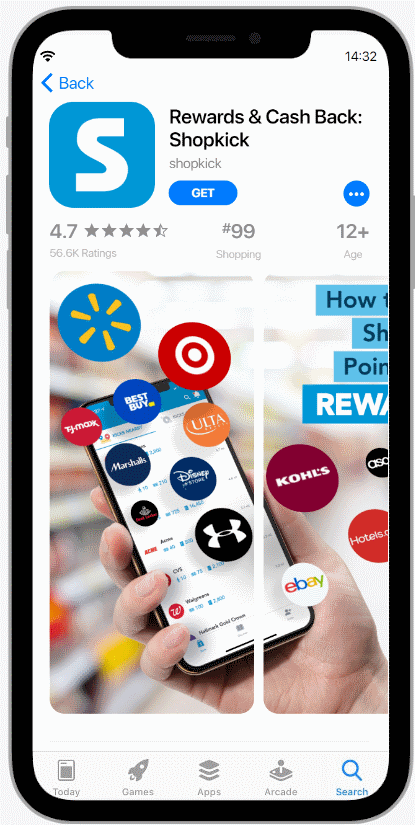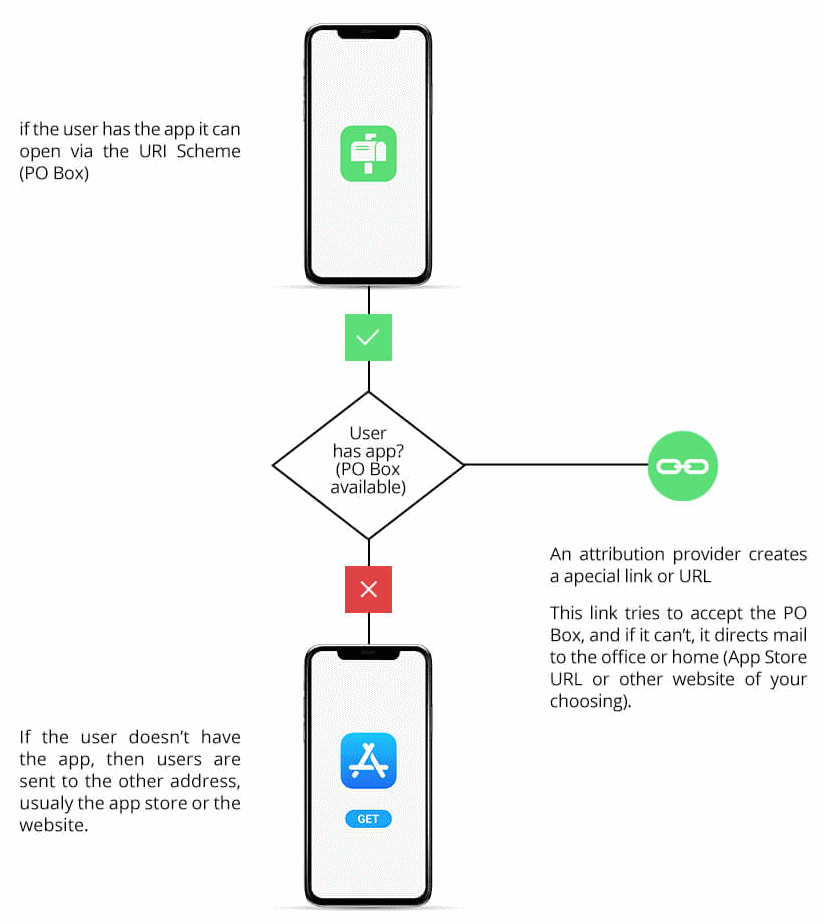How App Deep Linking Helps You Improve Your Conversions

Deep linking. Doesn’t sound like much by name, does it? Well, we can assure you that it’s certainly a name worth knowing in the mobile marketing world. App deep linking is growing in importance because it benefits both app marketers and users alike. It removes friction from, and therefore optimizes, the user journey. This makes it a great tool for increasing conversion and retention rates. Win win!
For app marketers, the biggest advantage of deep linking is its ability to lead users directly to the app page where you want them to convert. With less action required, the user experiences a more seamless overall journey. This means there’s far less opportunity for them to break away from the conversion funnel.
We can break it down into a little sum. Less friction = improved overall experience. Improved overall experience = higher conversion rate.
Another benefit of deep linking is remarketing. Simply put, if the user hasn’t uninstalled the app, placing an ad in a deep link can re-engage them. Bring them back from the dreaded zone of inactive users. Or, this method can also be used to target churned users (those users who previously deleted your app). Give them a reason they just have to return. Retargeting ads are an effective method for this, and a good place to start is with Facebook retargeting ads.
In bringing users back to your app, you’re increasing the likelihood of them converting. They can’t convert from afar! So app marketers are making gains, and at the very same time, users are getting a better app experience. They have less actions to perform and much smoother transitions to reach a particular point.
In this article, we aim to help you understand just what mobile deep linking is and how it can lead to conversion rate optimization for your business. We cover the different types of deep links, the various ways in which they can be used to encourage conversion, and most importantly: how to strategize for an all encompassing app deep linking strategy and target your audience for the most optimized deep linking campaigns.
What is Deep Linking?
In a nutshell, app deep linking sends a user to a specific page on an app. (The same is true for both iOS and Android devices). Instead of beginning with the traditional “https://” of a regular URL, deep links begin with the app name. They take users where regular URLs cannot, to a predetermined page within an app, usually for mobile marketing purposes. Ultimately, the end goal of deep linking is conversion. Within this, there are various ways of achieving the conversion.
Most importantly, you’re leading users directly to the specific in-app event you want them to take action on, for example a specific product page for a product you want them to buy. By controlling the user journey, and reducing the potential drop off points, you’re thus encouraging conversion.
Take note: this can be context driven. It can be a link to a product that the user previously placed in their basket, for example; this is a means of re-engagement. If you’ve got the data to know what was already piquing their interest, why not use it to your advantage and put yourself one step ahead of the game?
Another clever technique we’re fans of here at Moburst is creating a remarketing campaign for all users who didn’t put their card details into your app. “Save the hassle and input your details in a few simple steps” – make it sound like there’s something in it for them.
Contrary to what some MMPs (Mobile Measurement Partners) might mistakenly lead you to believe, deep linking is not a technology in itself. Anybody (who knows what they’re doing, that is) can set up a deep link and integrate it. We haven’t touched on deferred deep links just yet, more on that later, but using third-party solutions such as Adjust.com allows you to defer a deep link and track deep link activity. These third-party platforms are what provide the additional technology. Deep links work off the back of attribution. It’s the attribution data supplied from attribution providers (MMPs) that allow deep links to accurately route users to specific destinations within an app.
What are The Different Types of Deep Linking?
There are three types of deep linking:
- Default deep linking
- When a user already has the app installed this directs them to a specific page in the app.
- This is useful for retargeting campaigns where marketers want to re-engage users who already have the app.
- Deferred deep linking
- When a user doesn’t already have the app installed, a deferred deep link takes them to the app store page. Once the app has been downloaded, it takes the user to the originally intended app page.
- To create deferred deep links, you need to use an MMP.
- Contextual deep linking
- Either default or deferred deep linking but with added parameters that marketers can add themselves.
- They provide marketers with more data, e.g. who are the users? What channel or campaign brought them here? What device did they use?
How Does Deep Linking Improve Conversion Rate?
Deep linking can increase the conversion rate of your app by over 50% (around 51% on average). That’s a BIG increase, so you don’t want to miss out.
A Smooth, Controlled User Journey
It doesn’t take much to figure out that when you ensure someone lands in a specific location, they can’t get lost en route. So when you make sure someone ends up on the page you want them to convert on, you’re reducing the likelihood of them not converting by giving them less chance to break away from the funnel. That’s what deep linking does. Essentially, streamlining the user experience (and reducing the friction) is the main reason why you will see increased conversion rates – your users are less frustrated, have less opportunity to abandon their action (they don’t have to click numerous times to find the page themselves), and are pretty much hand held until they’re as close to the action point as possible. App marketers are in control of the user journey.
As an app marketer you are controlling two things: that your users have an optimized time using your app, and that your users end up where you want them to. Both, as we now know, have a positive impact on conversion rates.
Mobile Campaign Optimization
If you have a particular campaign or product you want to sell, you can optimize this through deep linking. By driving more traffic to the action point, you are thus likely to be improving the conversion rate. Just like shops in real life that see more foot-fall, more users on a particular app page can increase sales. What’s also worth noting is: users view many more products when in-app browsing than mobile web browsing, so it’s of greater value to guide them to the app for sales/ conversion purposes.
Deferred Deep Linking Benefits
As touched on above, deferred deep linking allows you to target even users who don’t already have the app installed – a method that can only be positive for the conversion rate by including a whole new category of people. This means that literally anybody can be taken to a page on your app that you choose, no limitations. As such, you’re reducing the break-off points on the pathway to conversion. A stronger path to conversion can only encourage a better overall conversion rate.
Rewards
It’s not breaking news that rewards, offers and discounts are a great tool in any marketers toolbox. Deep linking these persuasive sales techniques can help increase app downloads because it incentivizes users to use the app. 
Email and SMS
Deep links can be sent via email and SMS too, as a way of sending reminders to users. Performance tracking is a great technique whereby users are reminded of their achievements so far within your app, or products left in their basket (amongst many other things), via email or SMS. Have they unlocked a new level in a game or educational platform? Or beaten a goal? Deep linking performance tracking allows users to view these, update them and acts as a reminder of all they have invested in your app up to this point. When they’re reminded that they’ve already invested a lot of time (and sometimes money), they’re more likely to invest even more time so as not to have lost what they’ve gained. Essentially, each email or SMS deep link will bring users back to your app and one step closer to conversion.
MMPs / Attribution
An MMP is an official mobile measurement partner in Facebook’s marketing partners program. Take note: MMPs are attribution providers, but not all attribution providers are MMPs. When choosing an attribution provider, you must ensure it’s an official MMP as only these can receive and accurately measure Facebook campaigns. Official MMPs include AppsFlyer and Adjust.com. Attribution providers enable deep linking; you can’t deep link without the attribution data. That’s why AppsFlyer and Adjust’s attribution platforms work hand in hand with their deep linking provisions.
Mobile attribution is the process of matching two data points to discover where exactly your users are coming from; which ad? Which platform? Etc. Before an app deep links a user, it first attributes the user. How? It uses “fingerprints” from the user’s device (takes identifying information from the device to be used later, e.g. IP, phone size or OS version). When the user opens the app, the “fingerprint” from earlier is matched to them. A deep linking vendor responds with attribution data, e.g. which campaign the user came from, the media source or URL. The referral source or URL tells the app where to route the user.
It’s super important to use the same vendor for attribution and deep linking, because the technology is the same and so you can get the exact same benefits from using one. There are numerous benefits of this, but for conversion: it reduces the complexity and increases the efficiency of analysing attribution data, so you can know where to target future campaigns and reach a more ‘valuable’ audience who are more likely to convert.
Tracking which sources contribute most to your growth (and which don’t) – the source of any deep linking related conversions – allows you to send deep links to the most potentially valuable users who will contribute to your conversion rate more. You can thus optimize your deep linking strategy to lead to a cycle of increased conversions. Essentially, nail down the perfect formula for future success.
Physical (or “offline”) Deep Links
Mobile app marketers can put deep links in QR codes or NFC chips in posters, retail locations, any physical place. When you scan the QR code, for example, it’s a deep link that will take users to the specific in-app page set by the marketers. You’re not just limited to social media campaigns/ online. This widens the access, think of it like virtual foot fall. More customers in a store mean more chances of sales, right? Apply the same logic to apps. If more users are sent to a page in your app, there’s more chances of conversion.
The Real Recipe to Deep Linking Success
How to Combine Your Deep Linking Strategy with Other Strategies? How do Standalone Deep Linking Strategies Need to Differ from Regular Strategies? Most advertizers think of a deep link as a standalone solution. They think “I have a page on an app that I want users to go to, so I should create a URL and send users there”. However, smart advertizers (like some of Moburst’s clients) create a whole new strategy for deep linking that combines creative, app flow, product and deep linking strategy. This combined strategic approach of smart advertisers involves preparing brand new creatives, preparing for the app flow and working with the client’s product team to brainstorm the product angle.
The most basic strategy would go as follows: it’s Black Friday or Cyber Monday. You are deep linking for four different stores (e.g. Walmart, Target, etc.). You send a deep link to the shopping page to all users interested in shopping and they decide what to buy. What we, as smart advertisers, like to do for our clients instead, is this: we send users directly to the products (in this example, the Walmart products) using four different deep links, each with new creatives, and four specific campaigns for the four different stores. We target specific users with these specific deep link combined strategies. By preparing all kinds of strategies for the deep link, so that it’s not standalone, we ensure real success and improved conversion rates.
How to Build Specific Audiences and Engage Them
So, you’ve got a gardening product that you want to drive sales for. You set up a deep link to this product. You create a campaign with this specific deep link to lead people to buy the product. You create a group that’s more suited to this deep link, an appropriate audience; you choose to target men aged 50+ that are interested in gardening. This is the right way to go about things – it will lead to an improved conversion rate.
Now, you might think this is pretty obvious. But, believe it or not, most advertisers don’t think about it. They’re so stuck in creating the deep link and sending specific users to specific pages that they forget about targeting specific deep links to different app pages than usual.
At Moburst, we like to create separate audiences and combine new audiences to improve the conversion rate even more than what can come from regular deep linking. With an e-commerce client in the past, we took an audience by location and searched all of the relevant stores and people that were next to them in the previous seven days. We built an audience according to that geo-data. From there, we knew who had the potential to be interested and was usually buying from the target stores. Then, we combined the deep linking and BOOM the conversion rocketed.
Conclusion
We hope it’s now clear how to use deep linking to improve your conversion rate. Although we covered the basics, too, it’s important to take this away with you: to get the best results with deep linking, you shouldn’t look at it as a strategy on its own. When you combine it with the various other elements of the app marketing funnel, you’ll see your conversion skyrocket. And you might just wipe out the competition, because this is a method far less practiced than you may believe!










